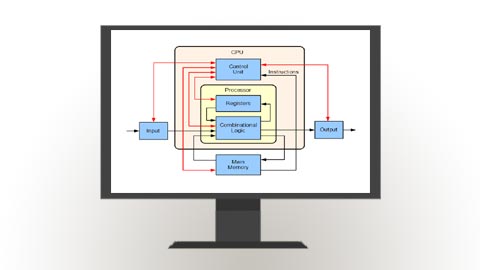A computer has become an everyday function in today’s organizations. Whatever we do, be it browsing the web, sending emails, creating and writing documents, is on top of computer architecture. Certificate in PC architecture explores how machines are designed, build, and function.
Word “architecture” rings a bell for various aspects of infrastructure. To understand pc architecture, one must understand the modern state of the art in computer hardware. It includes the internal working of nano-scale microprocessors to large-scale data centres, including programming of core machines and the cluster of a virtual and physical machine that gives data centre power.
Being aware of what is inside and how it functions will help design, develop, and execute applications better, faster, at low cost, and easier to use because you will be able to make informed decisions instead of making assumptions.

The Computer Architecture Certificate covers the theory, design, implementations, and applications of computer architecture. Computer architecture’s design methodology is rapidly changing due to advancements in microprocessors, integrated circuits, and neural and VLSI circuits. PC applications are many, including supercomputers, signal processing, communication systems, control systems, and large-scale information processing systems. To gain insights and a deep understanding of a subject, a certificate in pc architecture is recommended by industry experts.
A rundown of what certificate in computer architecture course includes:
The introductory part consists of some of the innovations in technology that led to modern computers’ development. The study starts with a look at the different components of a computer. We will then discuss ways in which we determine hardware and software performance before understanding the significance of computing ability and how it motivated the switch from a single to a multi-core processor.
Hardware language
to apprehend computer architecture, you need to understand the components of a computer and their interconnections. Programs, which are sets of instructions, describe the calculations that computers carry out. The instructions are strings of binary digits. The instruction is called assembly language instructions. Components interpret the instructions and give massage to other components that carry out the instruction. You will build upon instructions for programming of hardware.
Processor designing
In processor designing, you will learn programming from computer Science introduction to learning how to do assembly language. Simple processor instructions are used for understanding the basics of hardware language. Different instruction classes typically found in computers and compare the MIPS instruction found in other processors will be discussed.
Fundamentals of digital logic design
we begin with the overview of identifying the building blocks of digital logic and build on that Foundation by writing truth tables and understanding more complicated sequential digital systems with the memory unit. It serves as background information for the process design technique that is learned in the later part.
In learning computer arithmetic focus will be on building up knowledge of computer instructions digital logic designs to converse computer arithmetic in hardware. The discussion will also be made on the designs of adders multipliers and dividers and learn about two types of arithmetic operations performed by computers integer and floating-point
After the Fundamentals of digital logic design, learning will proceed to Various components of Microprocessor without Interlocked Pipelined Stages (MIPS) processor architecture and then take a subset of MIPS instructions to create a better understanding of simplified processor in process design
It may require you to apply the information you learn in the above section to create a simple processor architecture known as pipelining, which improves processor performance. Identifying the issue that limits the performance gains will also be elaborated
The memory hierarchy section will address the memory hierarchy of computers and will categorize types of memory and how they interact with each another; this unit will look into a memory type known as cache, discuss how it can improve computer performance, then the focus is on the main memory D Ram and the associated concept of virtual memory, you will also look at the common Framework for memory hierarchy the review of designs of cache hierarchy for industrial microprocessor
Storage and IO
Storage and Input /output devices that enable communication between computers and the outside world in a different form will be discussed; among these devices is an essential discussion on the related issue of dependability, availability, and reliability will be done. You will also look at storage mediums such as disk and flash memory before learning about the mechanism used to connect the computer to the input/ output device in this unit; we conclude by discussing system disks’ performance measures.
Parallel processing
it consists of several advanced topics in Computer Architecture focussing on the reason for the consequences of a recent switch from sequential processing to parallel processing by hardware procedure programming is not easy and the parallel processing in post certain limitations in frock performance gains as the well-known Amdahl’s law. You will also look into the concept of shared memory multiprocessor and cluster processing as two standard means of improving performance with parallelism. Parallel processing will conclude with a look at some of the programming techniques used in the context of parallel machines.
In the end, a section is provided for a recap of the essential concepts of Computer Architecture that were covered in this course.
Computer Architecture is a multifaceted subject. It is an index subject particularly interesting if you are interested in Computer Architecture for professional research, designer-developer, tester, and manager.
Computer architecture is a rich source in understanding other areas of computer science, giving you a broad and robust foundation for the study of programming computer language, compiler, Software Architecture, domain-specific computing like scientific computing, and more. You’ll also look back at the theoretical law and analysis technique introduced during the course. A special introduction to application-specific processing unique purpose, process high volume data storage, and network computing is also covered
A certificate in pc architecture is what you need if you want to gain additional insight into computer hardware and its interaction with the various domain.

